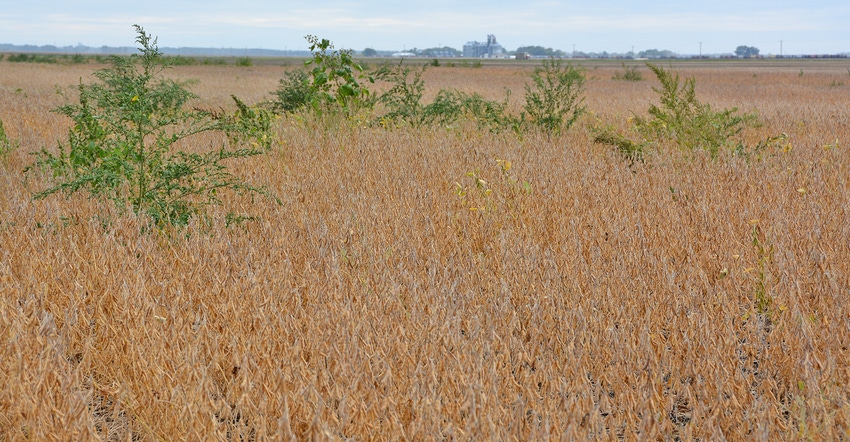
You can’t afford to let even one difficult-to-control weed such as waterhemp or Palmer amaranth go to seed, according to Scott Kay BASF vice president for Agricultural Solutions, U.S. Kay spoke at BASF’s recent Global Media Event.
“The last weed standing is the strongest, most capable and probably the most genetically resistant weed on the farm,” he said.
BASF launched Operation Weed Eradication to change the mindset that a few weeds in a field are not economically important.
Weeds such as waterhemp and Palmer amaranth produce so many seeds that just a few plants in a field one year can turn into a train wreck the next, he said.
You will spend a lot of money cleaning up a field if resistant weeds take over, he said.
The need to eradicate every last problem weed extends to fence rows, waterways and wetland edges, he said.
Seventy-five percent of farmers are seeing weeds with herbicide resistance, Kay said. While new herbicide innovations may look promising, weeds adapt so fast it is difficult to keep pace with them.
The solution, he said, is to eradicate every single weed.
A checklist for eradicating weeds that BASF developed includes these steps:
Use tillage and cultivation when necessary.
Rotate crops for more diversity, which will make it easier to keep the fields clean.
Plant early or in narrow rows to help row crop canopy sooner. They will shade the soil and prevent some weeds from germinating.
Use cover crops and crop residue to prevent weeds from germinating.
Use herbicides with multiple, effective sites of action.
Layer residual herbicides.
Spray weeds when they are small.
Use labeled rates of herbicide.
Use residual and post herbicides.
Remove weeds from the crop when necessary and practical.
Mow areas or till areas that have too many weeds to eliminate by hand.
Eliminate weeds from field edges, fence rows, around ponds and wetlands and in ditches.
Destroy weed seed.
Clean machinery and equipment before moving to a different field so you don’t spread weed seed.
About the Author(s)
You May Also Like






